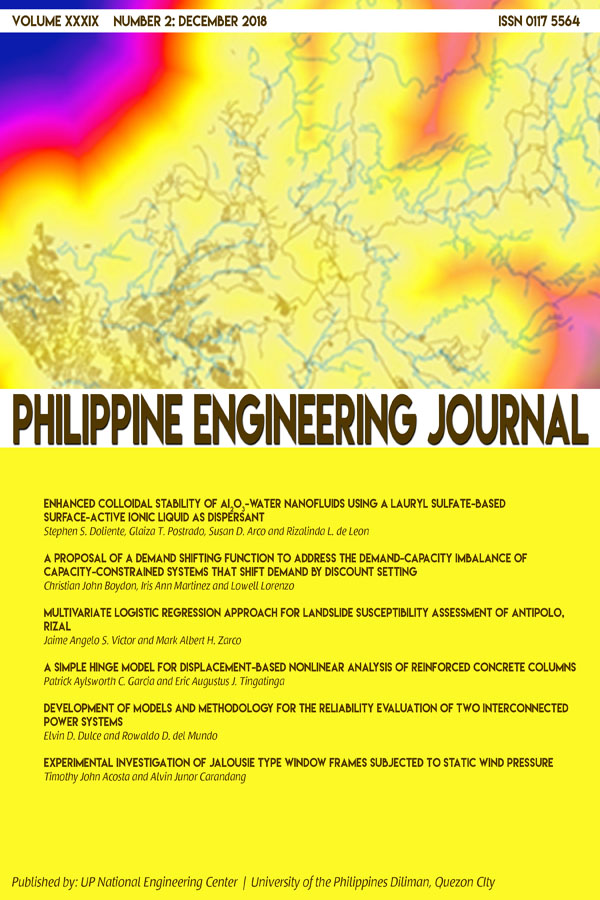Enhanced Colloidal Stability of Al2O3-Water Nanofluids Using a Lauryl Sulfate-Based Surface-Active Ionic Liquid as Dispersant
Abstract
Abstract – Originally intended as alternative thermal fluids, nanofluids or nanosolid-liquid composites now have other emerging industrial applications. However, nanofluids’ long-term colloidal stability must be further developed. In this original research, a halogen-free, low cost alkyl sulfate-based surface-active ionic liquid, 1-hexyl-3-methylimidazolium lauryl sulfate ([HMIM]LS) was proposed as a dispersant for Al2O3-water nanofluids to enhance its colloidal stability. Colloidal stability of Al2O3 nanoparticles dispersed in [HMIM]LS aqueous solution was monitored for one week using UV-vis spectroscopy, zeta potential measurement and particle size distribution. From UV-vis spectroscopy, absorbance of the nanofluid with [HMIM]LS was consistently higher than the controls even until day 7 by a factor of 38. The zeta potential of the nanofluid with [HMIM]LS became more negatively charged from -19.2 mV to -36.7 mV on day 0 and day 7. In spite of these modest values attributed to the adsorbed IL layer on the nanoparticle surface, these results supported the double layer micellar stabilization mechanism. Particle size distribution also corroborated with the absorbance and zeta potential results by showing that larger-sized particles settle slower in the nanofluid with [HMIM]LS compared to the controls. These results showed that [HMIM]LS was an effective dispersant for Al2O3-water nanofluids.
Keywords—Colloidal stability, Nanofluids, Ionic Liquid


